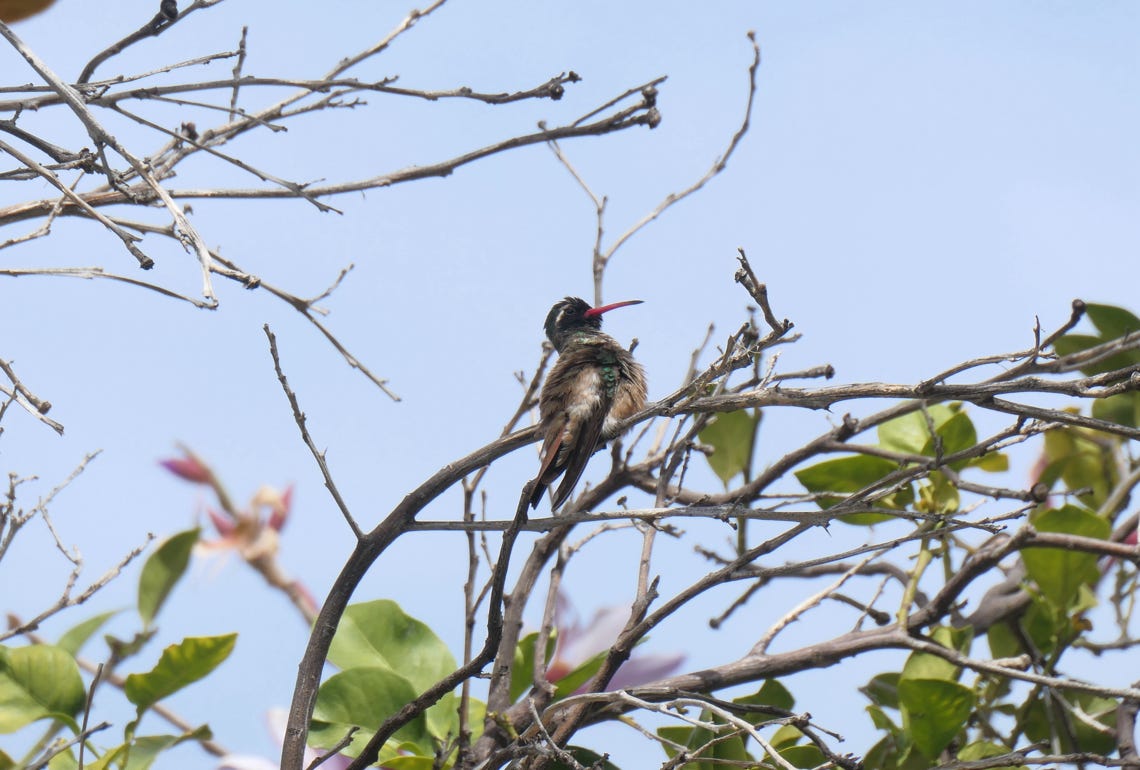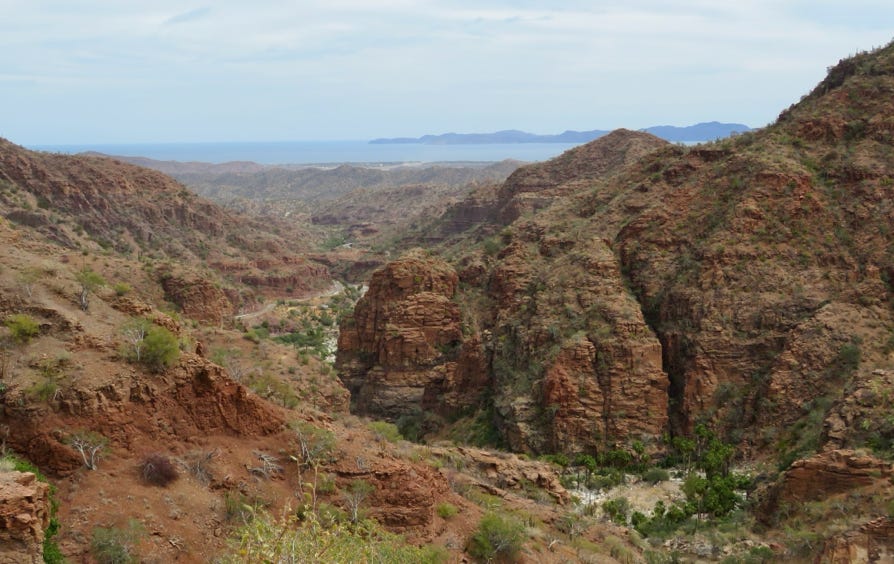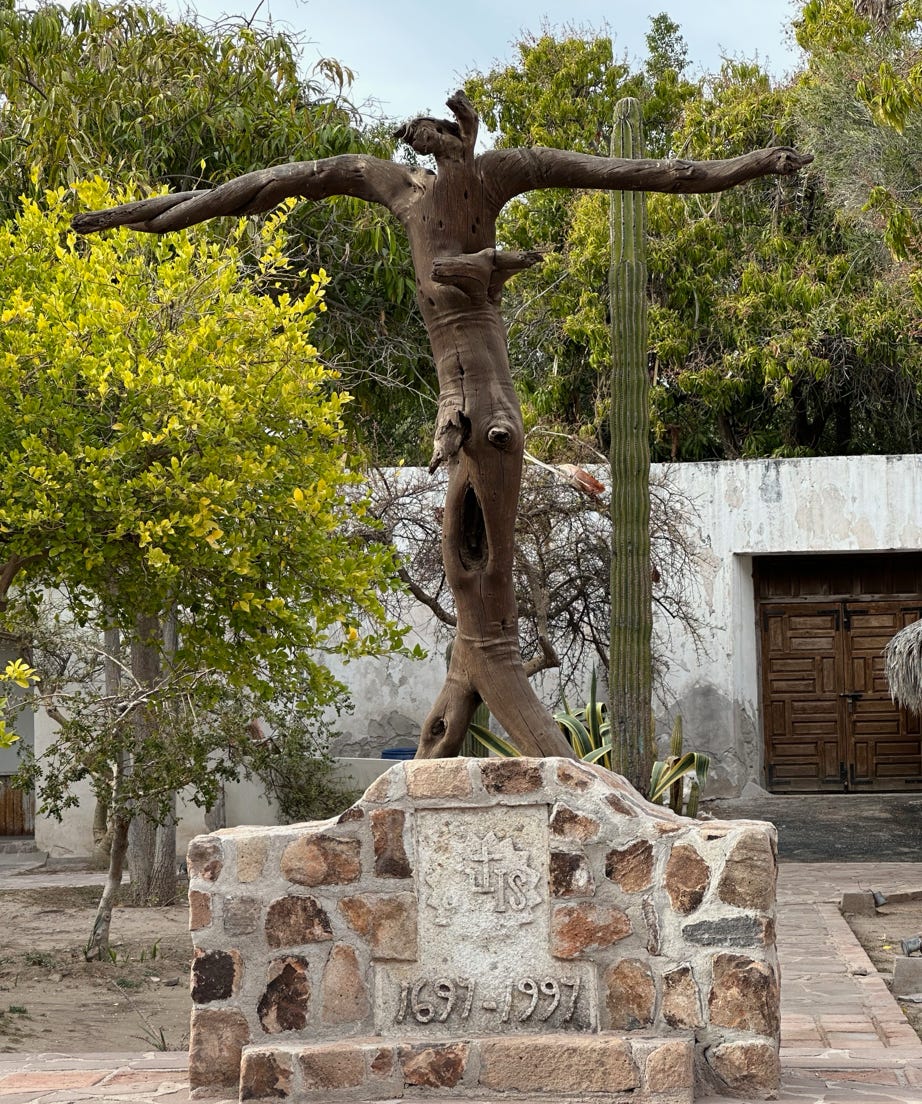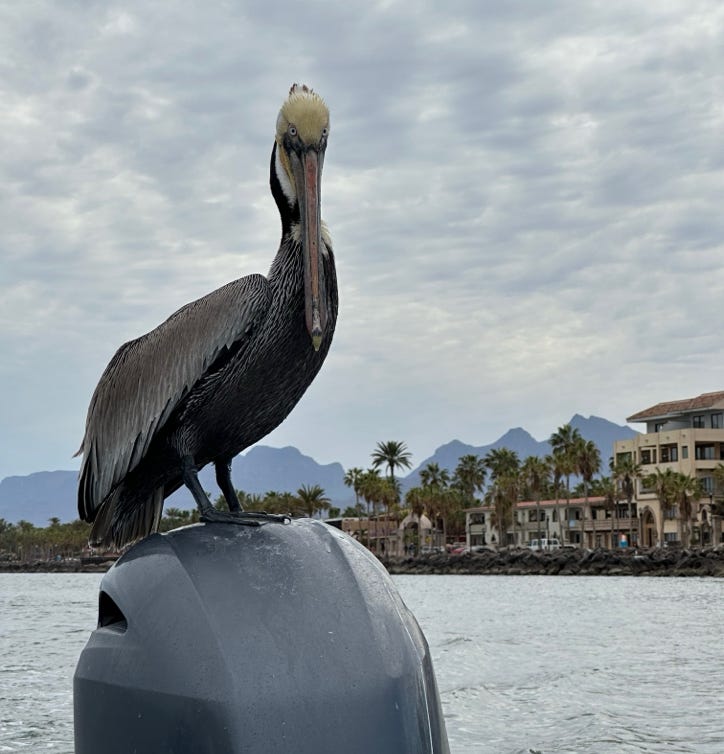Loreto and the Sea of Cortez


February 24, 2023
We disembarked from our ship at San Carlos at 8 a.m. We were driven by bus back across the peninsula (2.5 hour drive) back to Loreto.
There we met up with a guide who took us on a historical tour. We drove about an hour inland to the Mission town of San Javier.


Desert scenery on drive back to Loreto.
San Javier is the location of the second mission established by the Jesuits in Baja California. Although the mission was established in 1699, the church was not completed for another 45 years. We had lunch in an olive grove that featured a massive 320 year old olive tree (photo below). Then we visited the church and its small, adjacent museum. The church is the best preserved mission in Baja California.


San Javier Mission exterior above and interior below. The church is only used
today for festivals for the patron saint, which occur in December.

We saw this nice hummingbird in the garden outside the church.

We then drove back down from the mountains to Loreto. Loreto was founded by the Spanish priest Juan María de Salvatierra, and it was the first permanent Spanish settlement in the Californias: El Real de Loreto with the mission of Our Lady of Loreto Concho. Loreto continued to be the head-quarters for missionaries, even after the Jesuits were expelled from Baja California and replaced, first by the Franciscans in 1768 and then by the Dominicans in 1773. Loreto was the state capital until 1777. The paved road, Carretera Federal 1 or the Transpeninsular Highway, reached Loreto from Tijuana only in 1973, after which tourism began to blossom. In 1996, Loreto Bay National Marine Park was established, protecting 790 square miles in the Sea of Cortez and the Islands of Loreto.

A photo from the drive
to San Javier looking
back towards Loreto. From
this turn-off you could see
the original burro trail to
the mission established by
Fr. Savlatierra.
In Loreto, we visited the Loreto Mission, the first one established in Baja California, and its museum. The Mission was established in 1697, but was damaged by a hurricane and an earthquake. It was restored in the 1950s by a priest, Fr. Modesto Sanchez, who used funds he won in the lottery. As part of the tour, we saw a Virgin Mary statue brought from Loreto in Italy. The Mission marks the start of the El Camino Real which goes north all the way to Mission San Francisco Solano in Sonoma, California, last of the Baja and Alta California missions.

The Mission’s bell tower was added in the 20th Century restoration, and was
controversial because it is not in the same location as the original which was
destroyed by the earthquake. However, the local residents resisted calls from Mexico
City to tear it down, and it still stands today.

This monument was erected on the tricentennial of the Mission. It is not a sculpted cross. It is merely a piece of a tree that fell in a storm that looked artistic!

This is the statue that was brought
to the Mission from Italy. She is
dressed differently depending
upon the season. Note that she
has no arms.

The start of the Camino Real.
The area around the Church is a lovely pedestrian zone with lots of activity. Before returning to the hotel, we saw a modern mural painted in the stairwell of the municipal headquarters building, that showed the history of flora and fauna in Baja California; photo below depicts the story of Queen Calafia, after whom the Californias are named.

February 25, 2023
Today we went on our last whale watching excursion in a small boat in the Gulf of California (the official name, although still colloquially the Sea of Cortez) with another couple from our ship. It was very cool but not too windy (the area is known for wind in winter), and we saw three species of whale. First we saw a Fin Whale, the second longest whale species (first photo below). Then we saw a humpback whale, with its flukes showing clearly before diving below the surface. We have seen these whales several times before.


Lastly, we found a blue whale, the largest animal even known to have lived (up to 98 feet long) and the hardest to see. Our guide said this year had been challenging, because the weather was cool, with food moving south and offshore, and a pod of orcas also scared the blues away. So we considered ourselves lucky. This was a new whale species for us. The Eastern Pacific population of this species is estimated at 3,000-5,000. We watched it for about 2 hours. After surfacing, it would dive a for about 15 minutes at a time. The last time it surfaced, it was only about 100 feet from our small boat. The whale is so large it was hard to get the whole animal in a photo (see below). As befits its name, the color of the blue whale is lighter than that of the other whales we have seen.

Here’s a short video of the same blue whale.

This guy greeted us on our
return to the Loreto dock.

After returning to Loreto, we walked along the beach and through the historic town center for about 90 minutes. Above is a photo from our walk, a statue of blue whales.
February 26, 2023
We took a trip with a guide to take a hike in a desert canyon. The walk was a bit over two miles and we saw desert plants up close, including cardon and organ pipe cacti, as well as many fossilized shells and the like on the walls of the cliffs. It was nice to have a walk before our journey home.


Here’s a map of the places we visited on this trip.
We returned to the hotel mid-morning to pack and drive to the airport for our early afternoon flight. We transferred in LAX for our flights home, and let’s just say we don’t need to do this at LAX again any time soon. The walk from the satellite building in the international terminal to our gate in T6 was more than two miles according to our steps tracker. And of course, the flight to SFO was delayed due to another late incoming aircraft from Seattle.
We really enjoyed our week in Baja California Sur, and were impressed by the flora, fauna and history. The up-close encounters with gray whales are one of those experiences that cannot be adequately described. The on-board naturalists had varying backgrounds and expertises, and were fantastic guides as well as charming, interesting people. We learned a lot. Expedition cruising (with a small ship, casual dress and nature activities) suits us better than large ship/traditional cruises.

